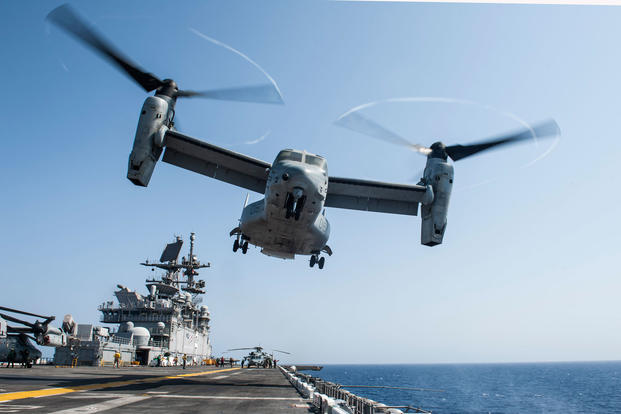The Navy and Marine Corps are on the cusp of changing the way they fight from the sea, and the future amphibious ship fleet must support warfighters' needs for decades to come, a two-star general said this week.
Marines and sailors will face off against cyber, space and underwater threats in future fights, and the amphibious ships they do it from must support next-generation equipment, said Maj. Gen. David Coffman, who serves the chief of naval operations as the director of expeditionary warfare.
"We need to be thinking about how to do warfighting from the sea out to 2070; we're on a 50-year plan," he told lawmakers and industry leaders in Washington, D.C.
Ships joining the fleet years from now likely can't look the same as they do today. Leaders will need to be forward-leaning, Coffman said, as they think about some of the capabilities that could be essential in hotly contested areas decades from now.
That means better networking speeds, medical capabilities and communications, he said. Eventually, autonomous technology -- including undersea vehicles, drones and other unmanned tools -- could take on some of the risky missions Marines face during amphibious assaults.
"Everything we're building should support both manned and unmanned systems," Coffman said. "... We can't go stale in terms of not evolving our capabilities."
Florida Republican Rep. John Rutherford, who serves on the House shipbuilding caucus, recently observed sailors and Marines training with their counterparts from two dozen countries during the massive Rim of the Pacific exercise.
"I believe even more strongly after that visit that we have to be prepared for any kind of fight," he said. That's especially true, he added, considering China's growing influence in the Pacific and North Africa.
The Navy's shipbuilding plan calls for a fleet of 38 amphibs. It's crucial the sea services meet that number at the same time they build other capabilities, like ship-to-shore connectors, said Rep. Rob Wittman, R-Virginia, chairman of the House Armed Services Committee's seapower and projection forces subcommittee.
"Marines can do almost anything," Wittman said. "But until they can walk on water -- and someday they might be able to do that -- we'd better be building them more ships."
Coffman, who's spent much of his career operating with Marine expeditionary units and Navy amphibious ready groups, has seen how everything from email to the F-35 Joint Strike Fighter changed the fight. A CH-46 helicopter pilot by trade, he went on to lead the California-based 13th MEU through two deployments with the Boxer ARG.
Ultimately, he said, building the right kind of amphibious ship fleet is about giving sailors and Marines the tools they need to survive. If they're willing to put their lives on the line for the mission, he said, they deserve to have the tools they need to succeed.
"We're going to be graded on whether we give them enough," Coffman said.
-- Gina Harkins can be reached at gina.harkins@military.com. Follow her on Twitter at @ginaaharkins.










